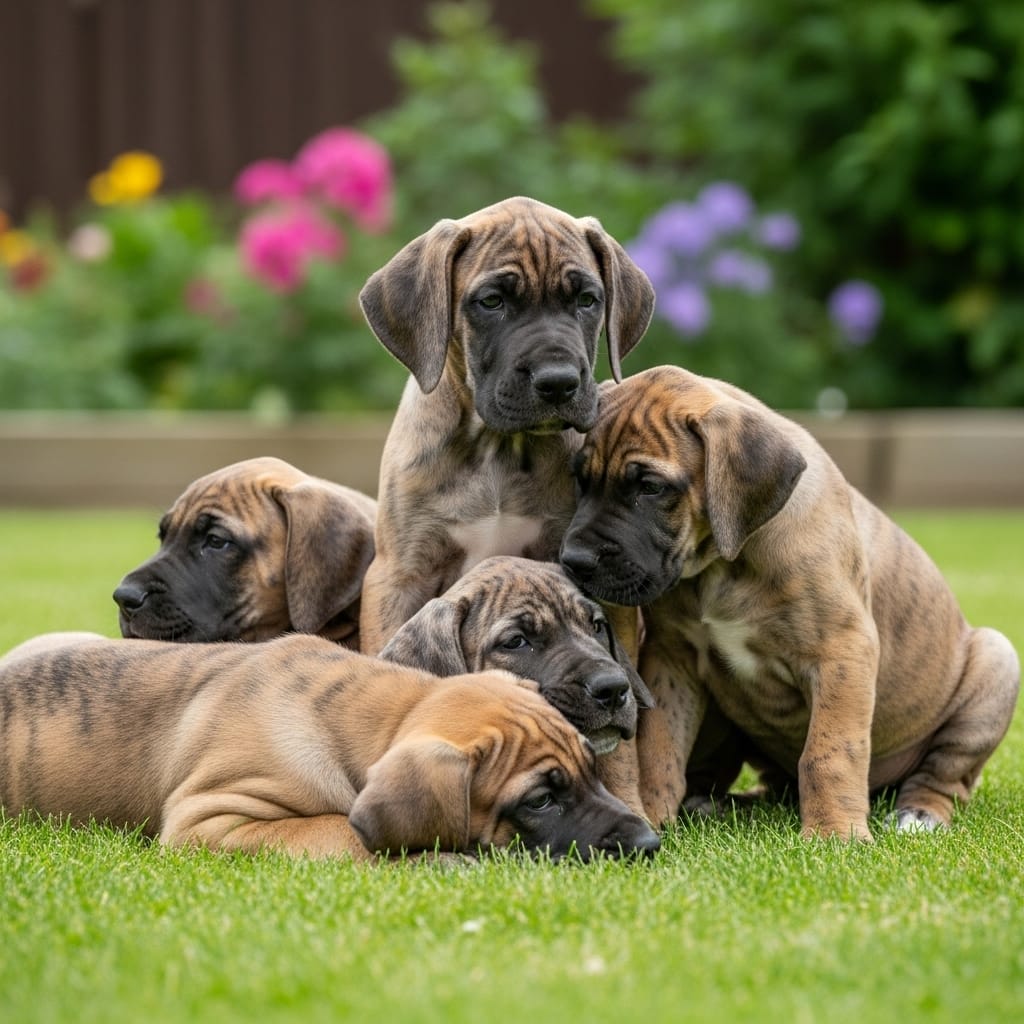
The Gentle Giant Awaits: Your Ultimate Guide to Finding Great Dane Puppies for Sale
There’s a certain magic that surrounds the Great Dane. Often called the “Apollo of Dogs,” their sheer size and majestic presence can stop you in your tracks. But look into their soulful eyes, and you’ll find not an intimidating beast, but a gentle, loving, and sometimes downright goofy companion. The decision to bring a Great Dane puppy into your life is a monumental one, filled with the promise of unwavering loyalty and couch-cuddling sessions that defy the laws of physics. However, welcoming one of these gentle giants into your home is a commitment unlike any other. It requires research, preparation, and a deep understanding of what makes this breed so special. This guide is your first step on that incredible journey, designed to navigate the path of finding Great Dane puppies for sale and ensuring you’re ready for the oversized love that awaits.
More Than Just a Big Dog: Understanding the Heart of a Great Dane
Before you even begin your search, it’s crucial to understand the essence of the Great Dane. Despite their name, these dogs do not hail from Denmark. Their origins trace back to Germany, where they were bred for their strength and courage, used to hunt formidable wild boar. Over generations, however, their temperament was refined, transforming them from fierce hunters into the noble, family-oriented companions we know and love today. They are not aggressive guard dogs by nature; rather, they are watchful and discerning, often serving as a visual deterrent more than anything else. Their true nature is one of sweetness and sensitivity. A Great Dane wants nothing more than to be with their people, often forgetting their immense size as they attempt to curl up in your lap for a snooze. They are deeply connected to their families and can suffer from separation anxiety if left alone for too long. They thrive on human interaction and need to be an integral part of the household, not a backyard ornament. This breed is for someone who wants a constant, loving shadow that will follow them from room to room, offering a reassuring presence and an occasional clumsy lean of affection.
The Search Begins: How to Find a Healthy, Well-Adjusted Great Dane Puppy

The internet is flooded with listings for “Great Dane puppies for sale,” and navigating this landscape can be treacherous. The single most important factor in your search is finding a reputable, ethical breeder. This is not about elitism; it’s about the health, temperament, and well-being of your future family member. A great breeder is a custodian of the breed, dedicated to improving it and ensuring their puppies go to the best possible homes.
Hallmarks of a Reputable Breeder
- Health Testing is Non-Negotiable: A responsible breeder will perform extensive health testing on their breeding dogs (the puppy’s parents). For Great Danes, this should include, at a minimum, certifications for hips (OFA or PennHIP), heart (by a veterinary cardiologist), eyes (CERF), and thyroid. Ask to see these health clearances. A breeder who dismisses the need for testing or claims their dogs are healthy simply “by bloodline” is a major red flag.
- They Are a Wealth of Knowledge: A good breeder will be able to answer any question you have about the breed—from diet and exercise to common health issues and training quirks. They should be passionate and transparent.
- They Interview You: Be prepared to be grilled. A breeder who cares deeply about their puppies’ futures will want to know about your lifestyle, your home, your family, and your experience with dogs. They are not being nosy; they are ensuring their puppy is a good fit for your life, and vice-versa.
- You Can See the Puppies’ Home: You should be able to visit the breeder’s home (or see it via video call) and meet at least the mother of the litter. The environment should be clean, safe, and stimulating. The puppies should be well-socialized, look healthy (clear eyes, clean coats), and be confident, not fearful.
- They Provide a Contract and Health Guarantee: A professional breeder will have a comprehensive contract that outlines the responsibilities of both parties. This contract typically includes a health guarantee and a clause requiring you to return the dog to them if you are ever unable to keep it, at any point in its life.
Red Flags to Avoid at All Costs
- The Puppy Mill Trap: These are large-scale commercial breeding operations where profit is prioritized over the well-being of the dogs. They often sell through pet stores or online marketplaces with slick websites. Red flags include having multiple breeds of puppies available, always having puppies for sale, an unwillingness to let you see the parents or the premises, and a focus on quick, impersonal transactions.
- The Backyard Breeder: This is typically someone with less malicious intent than a puppy mill operator but a similar lack of knowledge. They may love their family pet and decide to breed them “just once” to make a little extra money or because they think it would be a fun experience. They rarely perform the necessary health testing and often lack a deep understanding of the breed’s specific needs, genetics, and potential health problems.
- Online Classifieds and Parking Lot Deals: Be extremely wary of sellers who want to meet in a public place to hand over the puppy. This is a common tactic used to prevent you from seeing the poor conditions in which the puppy was raised.
The Cost of a Gentle Giant: More Than Just the Purchase Price
Owning a Great Dane is a significant financial commitment. While the initial purchase price of a well-bred puppy can range from $1,500 to $3,500 or more, this is just the beginning. Everything for a Great Dane is bigger, and therefore, more expensive.
- Food: A growing Great Dane puppy, and later an adult, consumes a substantial amount of high-quality food. You can expect to spend well over $100 per month on kibble alone. It is critical to feed a food formulated for giant breed puppies to ensure slow, steady growth and protect their developing joints.
- Veterinary Care: Routine check-ups, vaccinations, and parasite prevention are standard for any dog, but the costs are higher for Danes because medication dosages are based on weight. An emergency visit or surgery can quickly run into thousands of dollars. Pet insurance is not a luxury; it is a near-necessity for this breed.
- Supplies: Get ready to supersize everything. You will need a giant-sized crate, extra-large dog beds (they will likely claim your sofa anyway), sturdy toys that can withstand powerful jaws, and a harness that can safely manage a 150-pound dog.
- Training: Obedience classes are vital. A small, untrained dog is a nuisance; a giant, untrained dog is a liability. Early and consistent training is key to raising a well-behaved canine citizen.
Preparing Your Home and Life for a Dane
Bringing a Great Dane puppy home requires some adjustments to your living space and daily routine. Think of it as baby-proofing, but for a creature that will soon be able to rest its chin on your kitchen counters.
Counter-surfing is a given, so all food items, medications, and toxic substances must be kept securely out of reach. That happy, whip-like tail can clear a coffee table of its contents in a single wag, so precious knick-knacks should be relocated to higher ground. A fenced yard is highly recommended, not to leave the dog in, but to provide a safe space for potty breaks and controlled play. Remember, despite their size, Great Danes are not “outside dogs.” Their short coats offer little protection from the elements, and their deep need for companionship means they must live indoors with their family.
Health and Wellness: A Proactive Approach to a Shorter Lifespan
One of the most difficult realities of loving a Great Dane is their heartbreakingly short lifespan, which typically ranges from 7 to 10 years. This makes proactive health care and an understanding of their common ailments incredibly important.
The most feared condition in Great Danes is Gastric Dilatation-Volvulus (GDV), or bloat. This is a life-threatening emergency where the stomach fills with gas and twists on itself, cutting off blood flow. Owners must be educated on the symptoms (e.g., non-productive retching, swollen abdomen, restlessness) and have an emergency plan in place. Many owners opt for a preventative surgery called a prophylactic gastropexy, often done at the same time as a spay or neuter, which tacks the stomach to the abdominal wall to prevent it from twisting.
Other common issues include hip dysplasia, Wobbler syndrome (a neurological disease affecting the neck), and heart conditions like dilated cardiomyopathy. This is why choosing a breeder who health tests their breeding stock is so paramount—it significantly reduces, though does not eliminate, the risk of these inherited conditions.
The Unparalleled Joy of a Great Dane
It may seem like a daunting list of responsibilities and potential heartaches. So why do people continue to fall head over heels for this breed? Because the rewards are immeasurable. The experience of owning a Great Dane is unlike any other. It’s the gentle nuzzle of a giant head in your lap when you’re feeling down. It’s the comical sight of a 150-pound dog getting the “zoomies” around the living room. It’s the quiet, steadfast loyalty of a companion who believes you are the center of their universe.
They will drool on you, lean on you with their full weight, and take up more than their fair share of the bed. They will cost you a small fortune in food and vet bills. Their time with you will likely be far too short. But in exchange, they will give you a love so profound and a bond so deep that it will change you forever. If you are prepared for the commitment, ready for the responsibility, and have a giant-sized space in your heart, then the search for a Great Dane puppy may be the beginning of one of the greatest love stories of your life.







